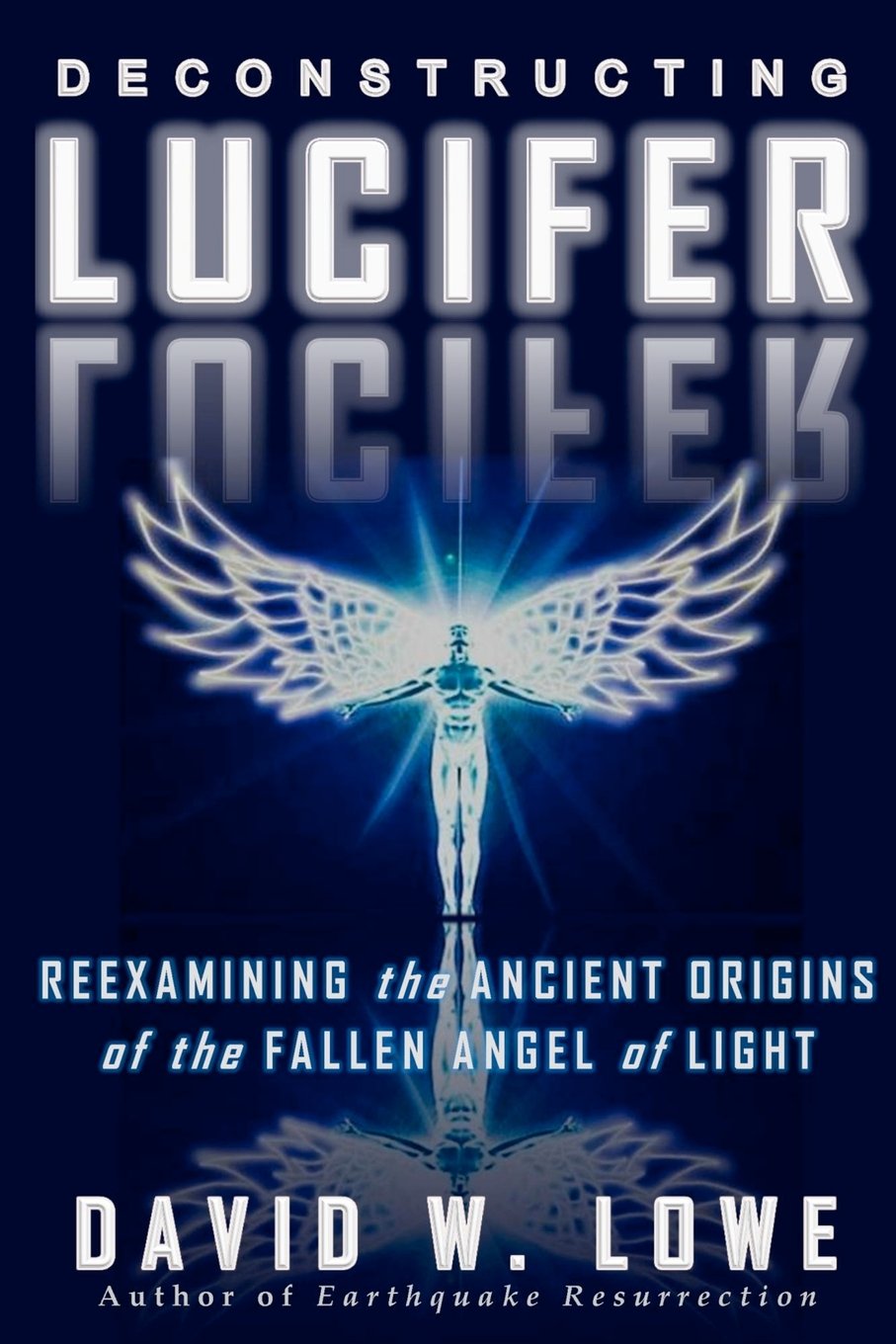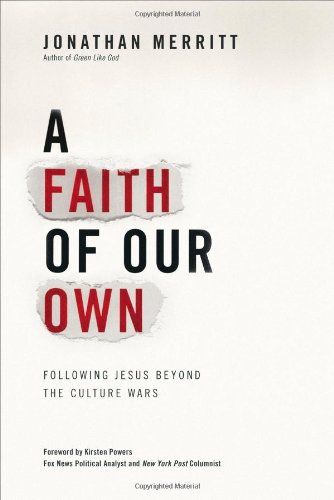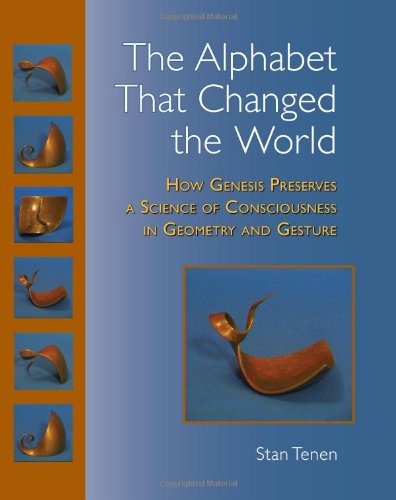Acts 18:2, The Jews Are Expelled From Rome
There he met a Jew named Aquila, a native of Pontus, who had recently come from Italy with his wife Priscilla, because Claudius had ordered all the Jews to leave Rome.
//Sometimes it’s interesting to tie scripture to history, just to put Biblical events in historical context. In today’s verse, the writer of Acts tells of Paul meeting up with a couple of Christians who had been ordered to leave Rome.
This order by Emperor Claudius came in the year 49 CE, as reported by Roman historian Suetonius. All Jews had to leave Rome. Jewish Christians, of course, would have also been expelled. The order was rescinded in 54, when a number of Jews began to return home. Christian communities that were for many years completely Gentile would thus once again mix with Jews.
But how would the returning Jews fit back in? Would any that once held positions of leadership in the church (however informal such positions were) be reestablished? Would they feel like outsiders, or be treated like outsiders?
Such was the atmosphere when Paul penned his letter to the Romans. So what did he write? He emphasized his indebtedness to both non-Greeks and Greeks (meaning, both Jews and Gentiles), and reminded the Christians there of “the power of God for the salvation of everyone who believes: first for the Jew, then for the Gentile” (Romans 1:16). Open your doors to the returning Jews, you Roman Christians!
Matthew 8:20, Was Jesus a Simple Peasant?
And Jesus saith unto him, The foxes have holes, and the birds of the air have nests; but the Son of man hath not where to lay his head.
//We have in our heads an image of Jesus as a penniless wanderer, a poor peasant from an obscure rural farming town. But over and over, as I studied for my book about John’s Gospel, I found this simple image contradicted. Instead, in John’s Gospel, Jesus surrounds himself mostly with aristocracy (the royal steward, Mary and Martha and Lazarus, Joseph of Arimathea, Nicodemus). Must we dispense with the penniless label?
Tradition and the book of Revelation tell us that St. John was banished to the Isle of Patmos by the Romans. For this to be so, John would have to be of high social status, and one wonders if John’s money and influence (or that of his mother, who accompanied Jesus’ entourage) didn’t help provide the small-town Jesus with connections above his caste.
Moreover, the image we have of “simple fishermen” for Jesus’ followers fits no better with John’s Gospel. Jesus doesn’t call them away from their nets in Galilee, he lures them away from John the Baptist. With the exception of the final chapter of John (which many scholars consider an add-on), the Fourth Gospel gives no indication that these men are fishermen.
Book review: Deconstructing Lucifer
by David W. Lowe
★★★★★
Lucifer. The mere mention of his name sends shivers down your spine, doesn’t it? Who is this evil angel of light, this beautiful but disobedient “son of God” who fell from glory?
He’s not who you think. First, David Lowe digs up the origin of the proper name Lucifer. He gives a solid argument for rejecting the idea that Isaiah 14:12-15 (the Lucifer passage) refers to Satan. He provides a hilarious discussion of the absurdity of thinking Ezekiel chapter 28 alludes to Satan as the “anointed cherub.” He leads us on an interesting quest to find the earliest references to the idea that Satan is a primordial fallen angel. It turns out to be post-Biblical; the Catholic Church screwed up this time. Then, he reconstructs Satan from Biblical passages (and a little help from the Book of the Watchers in 1 Enoch—Lowe feels that Jude’s reference to this ancient book in verses 14-15 lends it authority) to determine who the old snake really is.
So what do you think? If Satan is not Lucifer, the fallen angel, then who the devil is he? I’m not going to steal Lowe’s thunder, but I will give you a couple hints:
1. Lowe is a conservative Christian who appears to embrace the inerrancy of Scripture. His argument for Satan’s identity and role derives completely from the Bible.
2. You can ignore all those recent books I’ve been reviewing about the Problem of Evil. Oh, it’s still a problem alright, but not the way you thought.
So how do I rate the book? There are a few problems. One is that I’m hardly conservative, so the whole exercise was more academic than meaningful to me. Second, I found the ending a little anticlimactic after the buildup. Finally, I felt more than a little annoyed at Lowe’s digs at the Catholic Church as a tool of the Devil. Yet I so enjoyed the first 130 pages that I decided to stick with a five-star rating. Lowe has done his homework.
** ** **
Side note: While hardly the in-depth analysis that Lowe provides, and while we differ in opinion on some minor details, this short three-part series posted last October might whet your appetite on the topic before moving on to Lowe’s book:
http://www.dubiousdisciple.com/2012/10/isaiah-1412-the-origin-of-lucifer-part-i-of-iii.html
http://www.dubiousdisciple.com/2012/10/2-corinthians-1114-the-origin-of-lucifer-part-ii-of-iii.html
http://www.dubiousdisciple.com/2012/10/isaiah-143-5-the-origin-of-lucifer-part-iii-of-iii.html

John 14:22, The First Thomas, Part II of II
Yesterday’s post left off with this issue: Who is the Judas Thomas (Judas the Twin) who is listed among the Twelve? So far, John’s Gospel, the Acts of Thomas, and the Gospel of Thomas all make reference to this mysterious person, and he plays the feature role in the last two.
In fact, in the Acts of Thomas, chapter 13, Jesus says Judas is his brother. Thus, in early Syriac tradition, Judas Thomas is a brother to Jesus. This brings to mind Mark 6:3, which, speaking of Jesus, reads, “Is this not the carpenter, the Son of Mary, and brother of James, Joses, Judas, and Simon?” Thus we have Jesus, James, and Judas, all together in the same new religious movement, all of whom are brothers, presumably two of which—we might guess Judas Thomas and Jesus—are twins.
Now we understand why the Gospel of Thomas so strongly affirms the authority of James the Just, the brother of Jesus! It is all a family affair, and this James the Just, you may remember, headed up the first Christian church in Jerusalem after Jesus died. This mysterious “Fifth Gospel” (Thomas) appears to claim the authority of not only two disciples, but the two minor members of a triad of brothers: Jesus, James, and Judas Thomas.
Want more? Let’s look at these two authority figures, James and Judas Thomas:
James, the presumed author of the Epistle of James, apparently espoused a works-based ministry consistent with what we know about the early church in Jerusalem. Assuming this church is the same as the Ebionite church (which appears to be the first established Christian church in Jerusalem), James did not ascribe divinity to Jesus, nor did he believe in the virgin birth—no real surprise, if the brother of Jesus himself was its founder. The Ebionites were, instead, “adoptionists” like Paul and the Gospel of John, believing that Jesus became the Son of God at his baptism, not at birth.
Meanwhile the other brother, Judas Thomas, if the Gospel of Thomas is any indication, did not hold a high Christology either. All throughout this gospel, Jesus is not the Son of God or even the Son of Man. He’s just Jesus. Just the brother.
If this emerging brotherly triad begins to sound like a conspiracy theory, it’s because the facts remain ambiguous, dependent upon tradition. But it does all fall together neatly.
John 14:22, The First Thomas, Part I of II
Judas saith unto him, not Iscariot, Lord, how is it that thou wilt manifest thyself unto us, and not unto the world?
//Caution: If you subscribe to a high Christology, of Jesus as God, then these two posts (today and tomorrow) may be a little disturbing … and more than a little confusing.
Today’s verse introduces an unidentified fellow named Judas. Who is this other Judas, the one who is “not Iscariot”? (meaning, not the Judas who betrayed Jesus?)
It is, most conservative readers agree, “Jude.” The person to whom the Epistle of Jude is attributed. But let’s dig deeper. This verse in Luke tells us the second Judas is the brother of James, likewise distinguishing him from Judas the traitor:
And Judas the brother of James, and Judas Iscariot, which also was the traitor. –Luke 6:16 (see also Acts 1:13)
Chapter 1 of the Acts of Thomas affirms that Judas is indeed the brother of James (the wording is “Judas of James”), and names him “Judas Thomas.” Now, here’s where it gets interesting. The Syriac version of John’s Gospel tells us, in today’s verse (John 14:22), that “Judas, not Iscariot” is called “Judas Thomas.” Thus, he shares the name Thomas (which means “twin”) with another famous disciple, the “doubting Thomas” of John chapter 20. But these two Thomases are not the same person! There are two Thomases as well! This is clarified again in the Acts of Thomas, where the apostle Thomas appears in the same list of disciples as “Judas of James” (Judas Thomas, the brother of James).
Confused yet? It turns out that this “Judas of James” is the person about whom the Acts of Thomas is written, not “doubting Thomas!” Likewise, the famous “fifth Gospel” of the Nag Hammadi library, named the Gospel of Thomas, portions of which date back to the late first century, is not about doubting Thomas but about Judas Thomas, the brother of James.
Book review: A Faith of Our Own
by Jonathan Merritt
★★★★★
This is a book every Christian in America should read.
While I manage to avoid politics on my blog, I have been a little less successful on social media. This past election was scary and embarrassing. I have never felt our country so divided in my lifetime, and I have especially never felt Christians so divided.
Enter Merritt’s new book, with its subtitle of Following Jesus Beyond the Culture Wars. Merritt is an evangelical Southern Baptist, but the identification means little. A new wave of Christians are growing up in the church, and making a positive course correction by moving beyond partisan politics, following Jesus without fighting the culture wars.
For many, having churched in an us-versus-them atmosphere, this new wave will be uncomfortable. Merritt tells how, having been raised in a conservative family with ties to the “so-called Religious Right,” he thought faithful followship of Jesus meant defeating liberals.* Like Forward contributor Kirsten Powers, I, too, have been asked, “How can you be a Democrat and a Christian?” Oddly, I sometimes wonder the opposite: How can you be a Republican and a Christian? So, Merritt set me straight as much as he did the GOP.
The new wave of young Christians have so had it with partisan politics that they are voting not for Christian principles but against culture wars. A poll conducted by Relevant magazine during the election year—a publication influential among young Christians—asked “Who would Jesus vote for?” The majority of respondents were self-described conservatives, and yet their top response was Barack Obama. Horrors!
Today, we know who won. Obama and the conservatives. Eh??
Take the issue of homosexuality. Merritt waffles all over the place, like he can’t make up his mind what his stance should be. To a lesser extent, he does the same with a short discussion on abortion. Even I was frustrated as I read! Get off the fence, man! Only later does Merritt explain that he purposefully avoids contentious issues as a distraction to the hands-on teachings of Jesus. Jesus didn’t ask Peter to picket the wolves, but to feed the sheep, right?
Chastised, I realized that I had forgotten the spirit of my own recent book. Merritt has hit the nail on the head, and accomplished it with a book that you won’t be able to put down.
* Liberals = “a cantankerous minority of secular humanists attempting to chase Jesus out of God-blessed America.”

Focus on the Author: Stan Tenen
A couple weeks back, I posted a review of a fascinating theory about the evolution of the Bible. I very much enjoyed the book, but could not get behind the theory, as the research seemed as yet unsubstantiated.
Stan prepared a thoughtful rejoinder, and posted it as a comment on the thread, but I think it’s worth further highlighting. This, then, from Stan Tenen, author of The Alphabet that Changed the World.
*********
Hello readers,
First, let me express my thanks and appreciation to Lee Harmon for his thoughtful review of The Alphabet That Changed the World. In no particular order, there are a few points I’d like to add.
One way to evaluate new ideas is to ask one’s self what it would mean—what would the implications be—if the proposal were true. Objective science is often a matter of suspending disbelief long enough to check out ideas which may not fit easily into current understanding.
—If what I’m proposing is correct, and the letters come from hand gestures, then one purpose of these gestures could be to standardize and record mental and physical exercises, dances in the mind and dances in the world. (Possibly including Levite dances from Solomon’s temple, and possibly including some Sufi dances—in particular, Rumi’s description of the Mevlevi Sufi Round Dance. See Appendix M of The Alphabet That Changed the World.)
—Again, if I’m right, there could be a parallel between the function of a Bose-Einstein condensate in physics and a loving, caring, coordinated minyan, congregation, or communion. I’m proposing the possibility of an analogy between the near-absolute-zero temperature of a Bose-Einstein condensate, and the near-egoless participation in a loving minyan.
—I’m not asking anyone to take these (at best) informed speculations as true. I’m proposing that these ideas be tested. (We can discuss how they might be tested separately.)
As to how and when these ideas were lost, I think it’s likely it was due to 2000 years of erratic and often persistent persecution of Jews, Christians, and Muslims who knew of these deep teachings. (The Gnostics, for example, are no longer with us.)
For a highly readable history of what may have happened, I recommend James Carroll’s Constantine’s Sword.
What I’m proposing does not actually conflict with most established scholarship. I’m proposing that the “Bible stories” are essentially true. Their purpose is to preserve the tradition, and to preserve the deeper levels of meaning. The idea that the stories may or may not have been gathered from disparate sources is not addressed by what I’m proposing. Instead, I’m proposing that the stories—whatever their origin—are interwoven with the patterns in the letter-text (as I try to illustrate on pages 119-121 of TATCTW).
I’m trying to find a way to understand traditional Jewish, Christian, and Muslim perspectives, as well as perspectives of modern scholarship and what comes from the application of the scientific method—all at the same time.
For example: I’m proposing that the Indo-European language hypothesis is likely correct, but I’m also proposing that it applies more to spoken language than to written language. If I’m right, there is good reason for words like LeVaNah in Hebrew (meaning “white”) and aLBiNo in Latin (also meaning “white”). There is also an operational correspondence (though not a phonetic correspondence) between YH-VH in Hebrew (meaning “Lord”) and JEFE in Spanish (meaning “chief”). And so on, generally across the board—including all the Latin- and Greek-root languages. (This needs to be further tested and confirmed, so I’m currently working on a dictionary.)
The upshot of all of this is:
1) All of science and all of spirit are based on the Golden Rules, and in fact, God is not just love in the simple sense, but rather, the Lord-God is the process of loving-kindness raining down on us and filling our sails at all times.
2) Messiah/Moshiach is the emergent consciousness of a loving coordinated minyan/assembly/communion/umma—and this could be verified objectively (by experiments that still need to be performed).
Conscious Being / Moshiach
emerges from
Spirit / Shekhinah
emerges from
Vessel / Merkabah
emerges from
the Pool of the Mikveh
emerges from
a Loving Minyan
Coordinated by the Alphabet.
If what I’m proposing is valid, then the three Abrahamic covenants are like three separate vital organs in the same body politic, each performing a different function and with different needs, but all coordinated for the common good. This is a win-win-win model, not a zero-sum game.
There is much more. Please don’t take what I’m proposing on authority; please ask questions until you understand for yourself. This is a place where reason and faith can converge.
Best,
Stan
PS You can find much additional discussion in Meru Foundation’s eTORUS Archive at http://www.meru.org/Newsletter/journalindex.html.
Recommended reading:
Arthur M. Young, The Reflexive Universe
Aryeh Kaplan, Meditation and the Bible, ch. 2, “Floating Distraction”.
(All works by Aryeh Kaplan are recommended).
For basic knowledge on the Hebrew letters, see Wisdom in the Hebrew Alphabet by Rabbi Michael Munk, and its Appendix by Rabbi Nosson Scherman.
And for historical context, as mentioned above, James Carroll’s Constantine’s Sword.
Jeremiah 29:6, Does Captivity Stimulate Population Growth?
Take wives and beget sons and daughters; and take wives for your sons and give your daughters to husbands, so that they may bear sons and daughters—that you may be increased there, and not diminished.
//Today’s words were written by the prophet Jeremiah to encourage the Jews who were taken captive in Babylon. Included in the letter of encouragement is the instruction to procreate.
You may remember that while the Children of Israel were kept as slaves in Egypt, they grew strong and prospered by the help of God, becoming a great nation. No such claim is made about their later exile to Babylon, but it seems God was with them there, as well. Perhaps captivity stimulates procreation? Here are the details:
The Bible tells us that when Jerusalem was sacked in 586 BCE, a total of 4600 people were taken into exile in Babylon.
When they returned from exile in 538 BCE, the books of Ezra and Nehemiah tell us that the number of returnees counted “42,360, plus 7,337 slaves and 200 singers, in addition to all their livestock.”
John 2:1, The Eschatological Feast Theme in John’s Gospel
And the third day there was a marriage in Cana of Galilee; and the mother of Jesus was there.
//John’s Gospel initiates Jesus’ ministry with a wedding in Cana. It is a marriage feast, where Jesus provides an excessive amount of wine, turning water into wine for the celebration. This is, of course, meant to remind us of the eschatological expectation of the final age, when God would provide food and wine in abundance.
With this wedding story, John sets the stage for his Gospel, which will repeat the feast theme over and over. John details the events of Sukkoth, Hanukkah, and an unnamed festival (probably meant to be recognized as Pentecost). Three different times John provides a Passover setting, leading chronological readers to assume Jesus’ ministry lasted about three years. Curiously, however, many of the events in Jesus’ life seem to happen twice, at different festivals. This is particularly true of the third Passover and the story of Sukkoth. It’s as if John tells the same story twice, with a different festival backdrop, as he leads up to the crucifixion.
This is not an unprecedented writing technique. The author of Revelation (the same as the Gospel?) does the same thing, often backing up to tell a story again from a different perspective. While the Gospel focuses on the joyous occasions of the spring festivals, Revelation points to the more solemn occasions of the fall festivals, the Feast of Trumpets and the Day of Atonement.
Book review: Immortal Diamond
by Richard Rohr
★★★★
Ready to experience the mystical side of Christianity with a Franciscan friar? Here’s a journey that Father Richard Rohr promises will secure a happier existence. It’s the quest for your True Self … the resurrected self, the “immortal diamond” deep within you, which he says is neither God nor human, but both at the same time.
It took me a little longer than usual to get into the book, which keeps it below a five-star review, but it was worth the persistence. My problem was that Rohr writes with a sort of matter-of-fact authority that left me wondering if I missed the proof text somewhere along the way. Perhaps I did; Rohr has published around two dozen books since his first in 1976, and this is the first I’ve read.
Rohr’s target is those who sense God is closer than they’ve been told. If you find yourself “in recovery from religion,” you’re in Rohr’s crosshairs. He wants to introduce you to a deeper meaning to life, deeper even than the surface Christian tradition that has been your paradigm to date. While Rohr’s heritage is clearly Judeo-Christian, and many of his quotes come from the Bible, he aims at uncovering the perennial truths that all religions share.
Resurrection is key, both of our Lord and of ourselves. Resurrection is necessary for new life, life in unity with God. As “children of the resurrection” (Luke 20:36), our relationship with God changes … we “breath God in and out—much more than we ‘know’ God, understand God, or even talk to God.” There is an intimacy with God at this level that we never reach within our selfish, base existence, the “False Self.”
A deep read, if you’re ready to take the leap.



















 354 Circles
354 Circles
 603 Goodreads Friends & Fans
603 Goodreads Friends & Fans

 Hello! I'm an author, historical Jesus scholar, book reviewer, and liberal Christian, which means I appreciate and attempt to exercise the humanitarian teachings of Jesus without getting hung up on any particular supernatural or religious beliefs.
The Bible is a magnificent book that has inspired and spiritually fed generations for thousands of years, and each new century seems to bring a deeper understanding of life’s purpose. This is true of not only Christianity; through the years, our age-old religions are slowly transforming from superstitious rituals into humanitarian philosophies. In short, we are growing up, and I am thrilled to be riding the wave.
I avidly read all thought-provoking religion titles. New authors: I'd love to read and review your book!
Hello! I'm an author, historical Jesus scholar, book reviewer, and liberal Christian, which means I appreciate and attempt to exercise the humanitarian teachings of Jesus without getting hung up on any particular supernatural or religious beliefs.
The Bible is a magnificent book that has inspired and spiritually fed generations for thousands of years, and each new century seems to bring a deeper understanding of life’s purpose. This is true of not only Christianity; through the years, our age-old religions are slowly transforming from superstitious rituals into humanitarian philosophies. In short, we are growing up, and I am thrilled to be riding the wave.
I avidly read all thought-provoking religion titles. New authors: I'd love to read and review your book!
 Hi! While Lee writes the articles and reviews the books, I edit, organize, and maintain the blog. The views expressed here are Lee's but I'm his biggest supporter! :-)
Hi! While Lee writes the articles and reviews the books, I edit, organize, and maintain the blog. The views expressed here are Lee's but I'm his biggest supporter! :-)
Connect With Me!